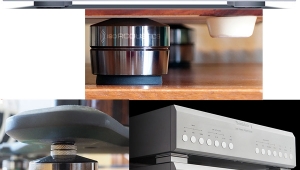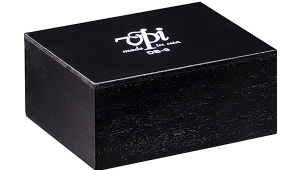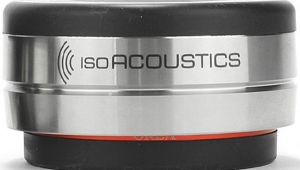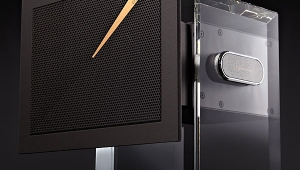| Columns Retired Columns & Blogs |
Bryston 10B electronic crossover High'n'Low Pass
Sidebar 3: High'n'Low Pass
Footnote 1: I see the new student in class madly waving her hand at this point. "What's an octave?" Merely a doubling or halving of the frequency. For instance, the octave above 1kHz has a frequency of 2kHz; the octave below, 500Hz.—TJN
Just what is all this terminology being tossed around when we discuss various kinds of crossovers? I'm certain there are readers to whom all this talk of "high-pass" and "low-pass" merely sounds like alternate methods of eliminating stones. In reality, it's simply filter-speak.
Crossovers are nothing more than combinations of filters of various degrees of complexity, whether active (powered), as in the case of the Bryston 10B, or passive (unpowered), as is more common in conventional loudspeakers. A two-way crossover consists of two "legs": the high-pass connected to the tweeter (passes highs, hence "high-pass"), and the low-pass connected to the woofer ("low-pass," for the same reason). A three-or-more–way system adds additional segments known as "band-pass" legs, because they pass a specific band of frequencies while filtering both above and below that band. The region below the crossover point for the high-pass, above the crossover point for the low-pass, and above and below the crossover points for a band-pass, are known as the "stop-bands," since the output is "stopped" in those regions. The bands not filtered are known generically as "pass-bands."
Of course, the output below, for example, the crossover point for a high-pass filter does not cut off immediately; filters roll off at a specific rate, generally specified in dB/octave (footnote 1) above or below the crossover point. This rate is almost always in multiples of 6dB/octave (6dB/octave is known as first-order, 12dB/octave as second-order, and so on). The higher the order, the steeper the rolloff in the stop-band. It's important to note, where loudspeakers are concerned, that such rolloff rates, when specified, nearly always refer to those of the crossover itself—ie, its electrical response. The actual acoustical performance of the filter/loudspeaker is further complicated by the inherent response of the driver, be it woofer, tweeter, or midrange.
By convention, the crossover point is defined as the point at which the filter response is 3dB down (though this standard becomes rather hazy when we're dealing with a specified acoustical crossover point). Loudspeaker designers do not always set the rolloff rates of the high- and low-pass filters at the same frequency. Creating a gap or overlap might compensate for deviations in individual driver responses. Similarly, different rolloff slopes on both legs of the crossover might be used for the same reason.—Thomas J. Norton
Footnote 1: I see the new student in class madly waving her hand at this point. "What's an octave?" Merely a doubling or halving of the frequency. For instance, the octave above 1kHz has a frequency of 2kHz; the octave below, 500Hz.—TJN
- Log in or register to post comments



































